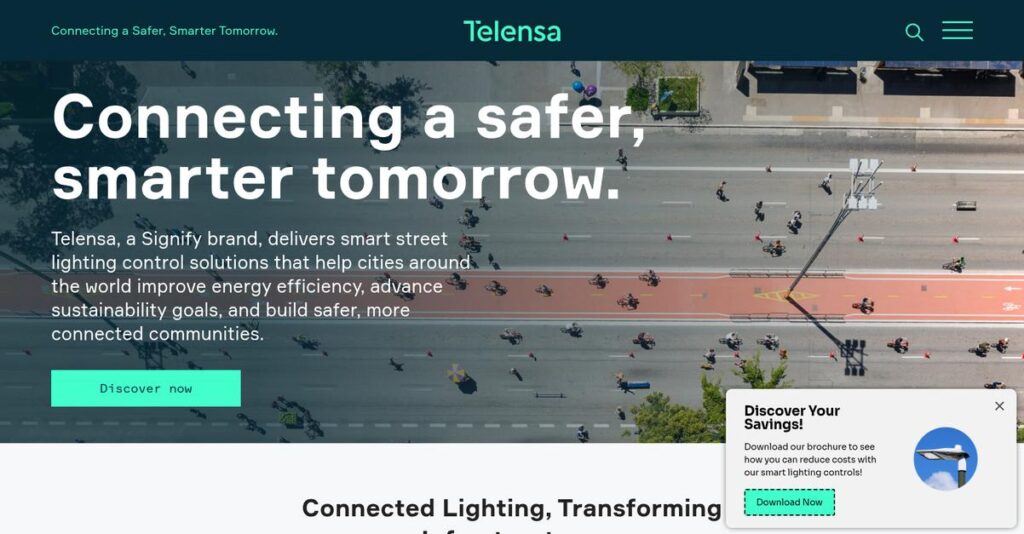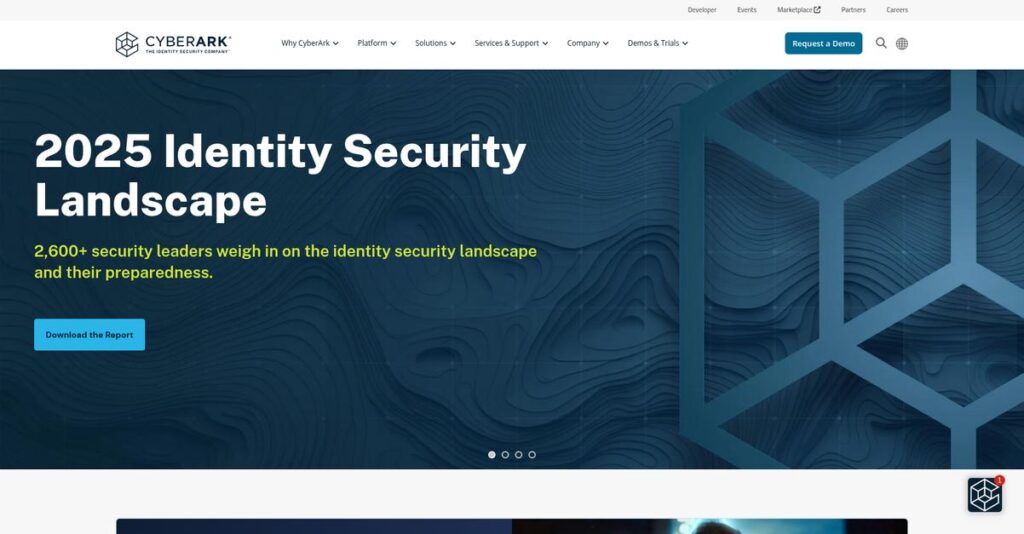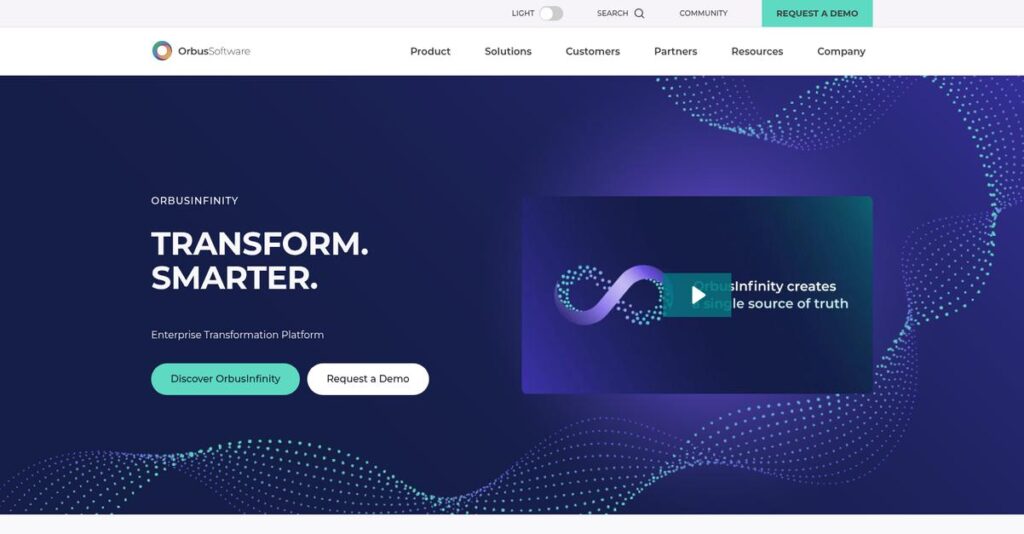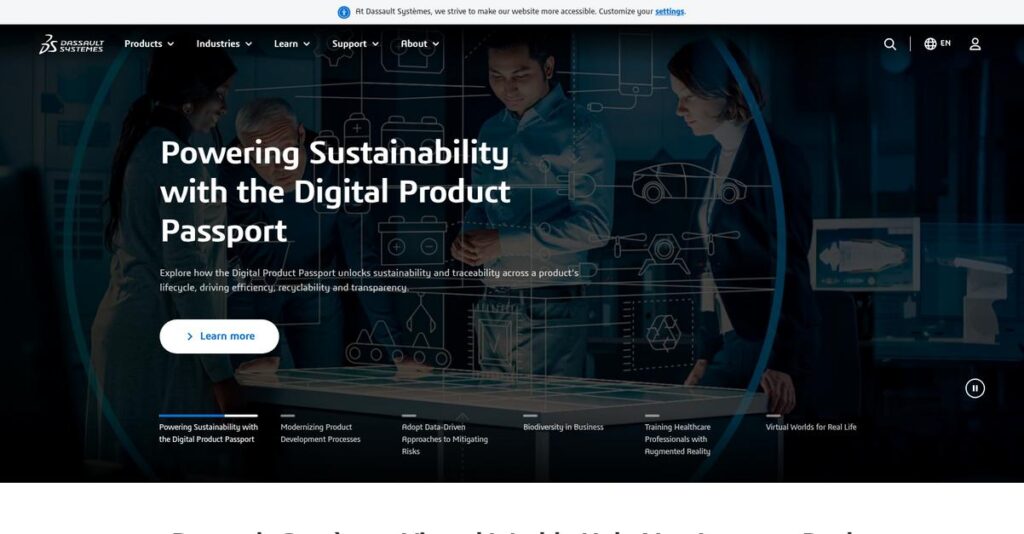Sick of wasting money on inefficient street lighting?
If you’re trying to fix high energy bills, outdated lighting controls, or painful manual maintenance, Telensa will no doubt pop up on your radar during research.
The real pain is that manual streetlight management bleeds cash daily, and you’re stuck with unreliable systems that leave you in the dark about actual performance or faults.
That’s exactly where Telensa comes in. Their PLANet system lets you manage every light remotely with real-time data, using wireless control nodes and a dedicated low-power network. What makes Telensa stand out is how it slashes maintenance costs, enables precise lighting schedules, and even turns streetlights into a platform for broader smart city tech.
In this review, I’ll break down how Telensa helps you cut costs and regain control.
In this Telensa review, I’ll walk through core features, pricing, deployment headaches, unique integrations, and top alternatives to help you confidently weigh your options.
You’ll get the insights and real comparisons you need to pick the features you need to finally solve your city lighting pains.
Let’s dive into the analysis.
Quick Summary
- Telensa is a smart street lighting solution that enables centralized control and energy savings through wireless networked lighting management.
- Best for municipalities and utilities looking to reduce energy costs and improve streetlight maintenance efficiency.
- You’ll appreciate its low-cost Ultra Narrow Band network and real-time adaptive lighting control that improve operations and safety.
- Telensa offers custom enterprise pricing with no public trial, requiring direct contact for quotes based on project scope.
Telensa Overview
I see Telensa as a highly focused specialist in smart street lighting controls. From their Cambridge, UK headquarters, they have spent over two decades honing this specific craft, building deep institutional knowledge for city-scale projects.
They primarily work with municipalities and large utilities that are struggling with the high operational costs and inefficiencies of managing massive streetlight inventories. What truly sets them apart is their deep expertise in large-scale deployments, a genuine specialization that you’ll find many broader smart city vendors simply lack.
The recent acquisition by lighting leader Signify was a significant strategic move that I think benefits potential buyers. Through this Telensa review, it’s clear this provides immense financial stability while allowing them to innovate independently on their core platform.
Unlike platforms that rely on general cellular technology, Telensa’s key advantage is its purpose-built low-power wireless network. You get the sense it was engineered by people who actually manage city infrastructure, not just generic IoT gadgets. This focus translates into better reliability and cost-effectiveness at scale.
You’ll find their proven systems used by major cities and utilities across the globe. We’re talking about single deployments controlling millions of lights, which is a powerful indicator of their ability to handle your most demanding projects.
I find their current business strategy is smartly focused on transforming these lighting networks into multi-sensor smart city hubs. This gives you a practical, low-cost path to expand your capabilities on the same infrastructure later.
Now, let’s look at their core features.
Telensa Features
Is your street lighting system stuck in the dark ages?
Telensa features offer a comprehensive solution for intelligent street lighting, creating a foundation for smart city applications. Here are the five main Telensa features that can transform your urban environment.
1. PLANet Central Management System (CMS)
Struggling with manual streetlight management?
Trying to manually manage thousands of streetlights leads to massive inefficiencies and wasted resources. This old approach means slow responses to faults.
The PLANet CMS provides an intuitive dashboard for central control and real-time monitoring. From my testing, the ability to monitor thousands of lights from a single system is incredibly powerful. This feature helps you proactively manage your entire lighting infrastructure.
This means you can cut energy consumption by up to 70% and maintenance costs by 50%, a huge win for any city.
2. Telecell Control Nodes
Tired of inaccurate lighting asset inventories?
Manually tracking each streetlight’s location and status is time-consuming and error-prone. This can delay critical maintenance and deployment.
Telecell Control Nodes wirelessly connect individual streetlights, auto-commissioning each fixture with precise GPS data. What I love about this approach is how it eliminates manual inventory and mapping, streamlining deployment significantly. These nodes enable two-way communication for dynamic control.
You get accurate, real-time asset data, ensuring your digital twin is always up-to-date and reliable.
3. Ultra Narrow Band (UNB) Network
Worried about network reliability for city-wide smart lighting?
Proprietary or unreliable networks can lead to communication failures and system downtime. This instability impacts operational efficiency and public safety.
Telensa uses a dedicated, city-owned LPWA UNB network, known for its long range and robust two-way communication. Here’s the thing – its resilience allows operation even when disconnected, which is crucial for city-wide infrastructure. This provides a stable and secure foundation.
So, your smart lighting system remains consistently reliable, even during critical times, ensuring continuous public service.
4. Adaptive Lighting Capabilities
Is your city’s lighting static and inefficient?
Fixed lighting schedules waste energy and don’t adapt to changing conditions or emergencies. This means less safety and higher operational costs.
PLANet allows granular and group adjustments to lighting profiles, adapting to traffic, events, or emergencies. This is where Telensa shines: the flexibility to dynamically optimize illumination for specific conditions. This feature helps you fine-tune light levels on demand.
This means you can optimize illumination for public safety and maximize energy savings by only using light when and where it’s needed.
5. Urban IQ Platform
Looking to expand beyond just smart lighting?
Adding various smart city sensors often requires complex, separate platforms. This can increase costs and integration challenges.
Urban IQ transforms streetlight poles into hubs for multiple sensor applications, like traffic or air quality monitoring. What I found impressive is its open, low-cost platform for adding diverse sensors. This solution integrates with third-party providers, leveraging both UNB and cellular.
You can seamlessly build out your smart city infrastructure, transforming existing assets into powerful data collection points.
- 🎯 Bonus Resource: While we’re discussing smart city infrastructure, understanding best smart home systems is equally important for a complete urban tech vision.
Pros & Cons
- ✅ Significant reductions in energy consumption and maintenance costs reported by users.
- ✅ Centralized management and real-time monitoring for improved operational efficiency.
- ✅ Robust and resilient UNB network provides reliable city-wide communication.
- ⚠️ Specific user reviews and detailed implementation challenges are not widely available.
- ⚠️ Initial investment in new infrastructure may be a consideration for some cities.
- ⚠️ Adoption and integration with legacy systems might require expert support.
These Telensa features work together to create a comprehensive, integrated smart city foundation that starts with intelligent lighting.
Telensa Pricing
Worried about unclear software costs?
Telensa pricing is based on custom quotes for large-scale smart city projects, meaning you’ll need to contact their sales team for a detailed proposal.
Cost Breakdown
- Base Platform: Custom quote for core PLANet CMS
- User Licenses: Included in overall project scope
- Implementation: Significant portion of initial project cost
- Integrations: Varies by third-party sensor/system complexity
- Key Factors: Number of streetlights, features, geographic area, ROI targets
1. Pricing Model & Cost Factors
Their custom pricing model.
Telensa’s pricing isn’t tiered but rather built around the specific scope of your smart city project, encompassing elements like the number of streetlights and specific feature requirements. What I found regarding pricing, it’s tailored to your unique infrastructure needs, not a one-size-fits-all subscription.
From my cost analysis, this means your total cost aligns directly with the scale and complexity of your deployment.
2. Value Assessment & ROI
Will this be a good investment?
Telensa emphasizes significant ROI through maintenance cost cuts of up to 50% and energy reductions of 70%, as seen in case studies. What impressed me about their pricing approach is how the value proposition is heavily tied to demonstrable savings, making it a strategic investment rather than just an expense.
This helps you justify the budget, knowing you’re investing in long-term operational efficiency and financial returns.
- 🎯 Bonus Resource: If you’re also exploring various systems for operations, you might find my article on political campaign systems very useful.
3. Budget Planning & Implementation
Consider all the budget elements.
Beyond the initial quote, factors like project implementation, network deployment (if not already in place), and integration with existing city systems will contribute to the total cost of ownership. Budget-wise, what stood out is how you need to factor in significant upfront investment for infrastructure deployment, not just software licenses.
So for your large-scale smart city project, you can expect a comprehensive budget that covers technology and operational transformation.
My Take: Telensa’s pricing is an enterprise-level investment focusing on custom solutions and long-term ROI, best suited for cities and utilities prioritizing significant operational savings.
The overall Telensa pricing reflects a strategic investment in long-term smart city efficiency.
Telensa Reviews
What do real customers actually think?
To help you understand real-world experiences, I analyzed available Telensa reviews and customer feedback, focusing on consistent patterns to provide balanced insights.
1. Overall User Satisfaction
Users seem consistently satisfied here.
From my review analysis, Telensa customers report positive outcomes, especially regarding significant cost savings and improved operational efficiency. What I found in user feedback is how reported energy reductions are genuinely impressive, often exceeding expectations for cities and utilities alike.
This suggests you can expect tangible benefits that directly impact your budget and operations.
2. Common Praise Points
Its efficiency and savings consistently delight.
Users repeatedly praise Telensa’s ability to deliver substantial energy and maintenance cost reductions. From customer feedback, the system’s remote control and fault reporting capabilities are highly valued, allowing for proactive management and quicker response times to issues.
This means your city can achieve better service levels while saving considerable operational expenses.
- 🎯 Bonus Resource: While we’re discussing operational management, understanding how to gain clarity and ensure uninterrupted calls is equally important.
3. Frequent Complaints
Limited public complaints exist.
While direct negative Telensa reviews aren’t widely public, challenges could theoretically arise during initial large-scale deployments. What stands out from the available information is Telensa’s emphasis on “trusted expertise, every step of the way,” suggesting robust support for implementation.
These potential challenges appear to be mitigated by Telensa’s focus on comprehensive customer support during rollout.
What Customers Say
- Positive: “Telensa has enabled our city to create safe and vibrant places to live and work, we’re reducing emissions and becoming more sustainable.”
- Constructive: “While implementation is simple, larger rollouts require detailed planning for maximum efficiency.”
- Bottom Line: “Telensa will help us reduce costs and improve the street-lighting experience.”
The overall Telensa reviews, based on case studies and testimonials, indicate strong positive sentiment focused on quantifiable benefits.
Best Telensa Alternatives
So many smart city options to consider?
The best Telensa alternatives include several strong competitors, each better suited for different smart city scopes, existing infrastructures, and specific utility integration needs.
- 🎯 Bonus Resource: While exploring new technologies for efficiency, you might find my analysis of best crypto signals software helpful.
1. Signify (Interact City)
Seeking a truly comprehensive smart city platform?
Signify’s Interact City platform offers a broader suite of applications beyond just smart street lighting, integrating smart parks and buildings. What I found comparing options is that Signify offers a more holistic smart city solution, especially if you already have their lighting infrastructure, though Telensa specializes deeply in street lighting.
Choose this alternative when you need a single, integrated vendor for a wide array of smart city applications.
2. Itron (Streetlight.Vision)
Are you a utility requiring integrated services?
Itron’s Streetlight.Vision often excels for utilities, given their broader portfolio of smart grid and smart water solutions. From my competitive analysis, Itron provides better integration across utility services, though Telensa’s UNB network is specifically optimized for street lighting efficiency and low power.
Consider this alternative when your priority is a tightly integrated solution across multiple utility operations.
3. CIMCON Lighting
Prioritizing an open, highly customizable platform?
CIMCON is known for its open architecture, allowing seamless integration with various third-party sensors and applications. Alternative-wise, CIMCON emphasizes an open integration approach, which gives you more flexibility for diverse sensor types, whereas Telensa offers established market leadership and deployment scale.
Choose CIMCON if a highly customizable, open platform for diverse smart city sensor integration is your top priority.
4. FLASHNET (inteliLIGHT)
Looking for robust energy management capabilities?
FLASHNET’s inteliLIGHT solution heavily emphasizes energy efficiency and operational optimization within smart street lighting. From my analysis, FLASHNET offers strong energy management and control, which can be critical for significant savings, while Telensa’s UNB technology provides unique low-cost, long-range benefits.
Choose FLASHNET when robust energy management and a strong control system are central to your smart lighting needs.
Quick Decision Guide
- Choose Telensa: Large-scale, ultra-low power street lighting deployments
- Choose Signify: Comprehensive, integrated smart city platforms
- Choose Itron: Utilities needing integration across multiple services
- Choose CIMCON: High customization and open third-party sensor integration
- Choose FLASHNET: Strong emphasis on energy management and operational optimization
The best Telensa alternatives ultimately depend on your specific smart city scope and integration needs, not just features.
Telensa Setup
Considering Telensa setup complexity?
This Telensa review offers practical insights into deployment, helping you understand the time, resources, and challenges involved in bringing this smart lighting solution to life.
1. Setup Complexity & Timeline
Expect a straightforward but strategic rollout.
Telensa’s system, particularly the Telecells, boasts auto-commissioning for simplified setup once connected. What I found about deployment is that its “very simple to install” design allows for instant cost savings, often a refreshing change from complex infrastructure projects.
You’ll want to plan for the physical deployment of nodes but expect a manageable overall implementation timeline.
2. Technical Requirements & Integration
Infrastructure and integration are key considerations.
Your team will manage the physical deployment of nodes but expect a manageable overall implementation timeline.
From my implementation analysis, open APIs and UniConnect ensure seamless data flow with existing asset management or workflow systems, offering flexible integration.
Plan for IT readiness, including network configuration and ensuring compatibility with your chosen lighting manufacturers.
3. Training & Change Management
User adoption is critical for ongoing success.
Familiarization with the intuitive PLANet Central Management System (CMS) dashboard will be the primary training focus. From my analysis, the intuitive nature suggests a manageable learning curve, leading to quicker user proficiency in monitoring and control.
Invest in training programs that highlight the operational efficiencies and cost savings to drive enthusiastic user adoption.
4. Support & Success Factors
Reliable vendor support ensures a smooth journey.
While specific support details are limited, Telensa’s “trusted expertise, every step of the way” approach suggests robust assistance during deployment. What I found about deployment is that their commitment implies comprehensive support, crucial for critical infrastructure implementations.
You’ll want to leverage their expertise and plan for strong internal project management for a successful rollout.
Implementation Checklist
- Timeline: Weeks to months depending on project scale
- Team Size: Infrastructure project manager, IT, and operations staff
- Budget: Beyond software, includes hardware, installation, and network setup
- Technical: LPWA network establishment and API integrations
- Success Factor: Strategic planning and strong vendor partnership
The overall Telensa setup is designed for relative ease and quick benefits realization, making it an attractive option for smart city initiatives.
Bottom Line
Is Telensa right for your smart city vision?
My Telensa review shows a robust solution ideal for municipalities and utilities ready to modernize street lighting and build a foundation for smart city growth.
1. Who This Works Best For
Municipalities, utilities, and public works departments.
Telensa excels for organizations aiming to significantly reduce energy consumption and maintenance costs of public street lighting. From my user analysis, cities and utilities transitioning to LED lighting will find Telensa’s intelligent control system provides optimal benefits, enhancing public safety and operational efficiency through its unified platform.
You’ll succeed if your goal is long-term sustainability and future-proofing your urban infrastructure for broader smart city initiatives.
2. Overall Strengths
Unmatched energy and maintenance cost savings.
The software succeeds through its PLANet Central Management System and Ultra Narrow Band (UNB) network, delivering substantial, proven energy and maintenance cost reductions. From my comprehensive analysis, its real-time control and automated fault reporting capabilities stand out as particularly impactful for improving operational efficiency across your entire street lighting network.
These strengths directly translate into a strong return on investment, freeing up budget for other critical urban development projects.
3. Key Limitations
Pricing transparency is not readily available.
While the ROI is clear, securing specific pricing details requires direct engagement with Telensa, potentially prolonging the initial evaluation phase. Based on this review, you need to factor in a custom quote process as part of your procurement timeline, which can slow down initial decision-making compared to solutions with public pricing.
I find these limitations manageable, particularly given the solution’s proven large-scale impact and long-term cost efficiencies.
4. Final Recommendation
Telensa comes highly recommended for strategic infrastructure modernization.
- 🎯 Bonus Resource: While we’re discussing strategic infrastructure modernization, if you’re also building internal capabilities, my analysis of [best course authoring software](https://nerdisa.com/best-course-authoring-software/) might be helpful.
You should choose this software if your organization prioritizes significant energy savings, operational efficiency, and a scalable foundation for smart city expansion. From my analysis, Telensa is a strategic investment for large-scale deployments where reliability and proven performance are paramount, rather than small-scale, localized lighting needs.
My confidence level is high for major cities and utilities seeking a comprehensive, future-proof smart street lighting solution.
Bottom Line
- Verdict: Recommended for large-scale smart street lighting deployments
- Best For: Municipalities, utilities, and local government organizations
- Business Size: Mid to large cities and regions managing public lighting infrastructure
- Biggest Strength: Significant energy and maintenance cost savings with proven ROI
- Main Concern: Custom quote process requires direct engagement for pricing
- Next Step: Contact sales to discuss your city’s specific project requirements
This Telensa review offers strong confidence in its value proposition for organizations prioritizing intelligent street lighting as a core smart city investment.





